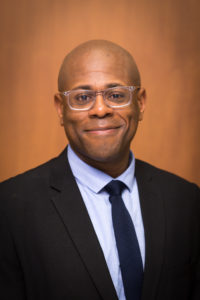Source: Michigan News

Harley Etienne. Credit: Daryl Marshke, Michigan Photography.

Harley Etienne. Credit: Daryl Marshke, Michigan Photography.
Harley Etienne is an assistant professor of urban and regional planning at the University of Michigan Taubman College. He teaches in the areas of urban community development, inner-city revitalization, neighborhood change, urban poverty, and qualitative research issues in planning. Etienne’s research focuses primarily on the intersection of social institutions and their relationship to processes of urban neighborhood change.
Contact: [email protected]
How did you get involved in the project?
Etienne: I’ve worked with Anya Sirota as a member of Taubman College’s faculty. She said we really want to put together a good team that included urban planning and she asked me to join. She is the nucleus of this team. We’ve all worked with her and each other in one form or another at some point, but she is the reason we are all together.
After the January presentations, it seemed likely that Agence Ter/Akoaki/rootoftwo/Etienne team would win just based on the questions and comments from the judges. How did you feel after that?
Etienne: Even though the other teams also made great presentations, the response to our presentation from the jurors and public was very positive. It was very gratifying and I’m really happy that we did win and look forward to what’s to come.
What sort of feedback did the team receive from Detroiters about the plaza plan?
Etienne: There were different moments when we interacted with the public last fall and in January. Their reactions were different. Some people were concerned about the loss of housing affordability. Will the project create a housing bubble, or spark gentrification? Will it still be affordable to students and artists? Later were heard more about parking and services that people would like to have in this area. I think that made us stand out that we spent so much time we spent talking about parking and traffic flow. And how parking becomes a critical part of this.
Will you be involved in the build out of the plan? How might that work?
Etienne: The first phase gives us 18 months to develop the actual plan for the concept we developed for the competition. We will conduct analysis on everything from understanding out how the traffic flow will change to where housing and parking can be added. We’ve already done some of that work, but we’ll need a finer grained analysis to move things forward to show how our proposals can be implemented.
Are these kinds of undertakings — the desire to connect cultural institutions in an engaging way — bubbling up in other cities?
Etienne: A lot of cities are doing this and learning how to leverage their cultural institutions for economic development like Dallas. A lot of cities have been intentional about how to make their cultural institutions more visual and appealing for local residents and visitors. One of the things we were aware of is each of the institutions in the area are real gems. This will help place Detroit’s cultural institutions on a global stage in the ways that other cities have done.
How did you approach your work on the project? What informed your sense of what needed to happen from the urban planning perspective?
Etienne: Architects and urban planners work very differently. Architects brainstorm a lot. We are more planning oriented. For my part it was a much more about how is this going to be perceived by the planning people. As we propose a lane reduction on Woodward are people going to freak about about a bottle neck in front of the DIA? What will happen to the parking lanes, the Qline? How does this project interact with each of the buildings. The logistics are something that urban planners are very concerned about.
What part of the concept are you most excited about?

Respect Cafe
I’m most proud about the Respect Cafe. It’s attached to the Charles Wright Museum of African American History. The museum caters a lot of events and this cafe gives them flexible space. There are two parts to the name. One is an homage to Aretha Franklin. The other is respect to Detroiters… to respect their story and where they came from. We thought long and hard about that name and I’m proud to say I had a hand in the name. We recognize the need to codify the need for respect for Detroiters into the name. I’m also really proud of what will happen in between the Detroit Public Library and the DIA. By reducing the traffic flow a bit, we really get to more of a human scale and much easier crossing for pedestrians.


